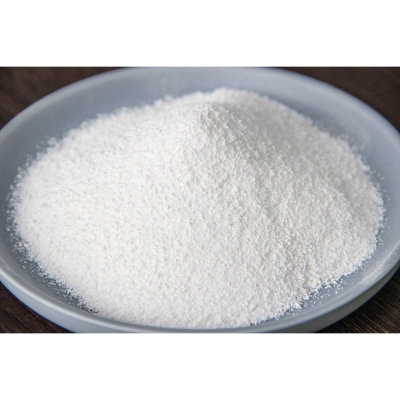-
Categories
-
Pharmaceutical Intermediates
-
Active Pharmaceutical Ingredients
-
Food Additives
- Industrial Coatings
- Agrochemicals
- Dyes and Pigments
- Surfactant
- Flavors and Fragrances
- Chemical Reagents
- Catalyst and Auxiliary
- Natural Products
- Inorganic Chemistry
-
Organic Chemistry
-
Biochemical Engineering
- Analytical Chemistry
-
Cosmetic Ingredient
- Water Treatment Chemical
-
Pharmaceutical Intermediates
Promotion
ECHEMI Mall
Wholesale
Weekly Price
Exhibition
News
-
Trade Service
core reading
The latest research by Chinese scientists has shown that by combining electrocatalysis with biosynthesis, carbon dioxide can be efficiently reduced to synthesize high-concentration acetic acid, and further microorganisms can be used to synthesize glucose and fatty acids
In September last year, Chinese scientists made a major breakthrough in the field of synthetic biology, realizing the de novo synthesis of carbon dioxide to starch in the laboratory for the first time in the world
A few days ago, the latest research jointly completed by Xia Chuan's research group of University of Electronic Science and Technology of China, Yu Tao's research group of Shenzhen Institutes of Advanced Technology, Chinese Academy of Sciences, and Zeng Jie's research group of University of Science and Technology of China showed that carbon dioxide can be efficiently reduced and synthesized by electrocatalysis combined with biosynthesis.
On April 28, Beijing time, the result was published as a cover article in the international journal Nature Catalysis
Carbon dioxide is first converted to carbon monoxide, and then acetic acid is synthesized
How exactly does carbon dioxide synthesize glucose and fatty acids?
"First of all, we need to convert carbon dioxide into 'raw material' that can be used by microorganisms to facilitate microbial fermentation
As for which "raw material" to be converted into, the researchers set their sights on acetic acid
"The direct electrolysis of carbon dioxide can obtain acetic acid, but the efficiency is not high, so we decided to divide it into two steps - first to obtain carbon monoxide with high efficiency, and then from carbon monoxide to acetic acid
At present, the electrosynthesis efficiency of carbon monoxide to acetic acid (i.
"In actual production, increasing the current can increase the power, but it may reduce the Faraday efficiency
However, the acetic acid produced by conventional electrocatalytic devices is mixed with many electrolyte salts and cannot be directly used for biological fermentation
"We used a new solid-state electrolyte reaction device to replace the original electrolyte salt solution with a solid-state electrolyte, and directly obtained a pure acetic acid aqueous solution without further separation
"Feed" acetic acid to Saccharomyces cerevisiae to produce glucose and fatty acids
After obtaining acetic acid, researchers began to try to use the microorganism Saccharomyces cerevisiae to synthesize glucose
"Saccharomyces cerevisiae is mainly used for the fermentation of cheese, steamed bread, wine and other foods, and it is also often used as a model organism for microbial manufacturing and cell biology research
However, during this process, S.
"Using the model organism Saccharomyces cerevisiae 'from scratch' to synthesize glucose at the gram level, which represents the high production level and development potential of this method
As a result, the researchers knocked out two enzymatic elements suspected of metabolizing glucose, and inserted glucose phosphatase elements from Pantoea and Escherichia coli
Yu Tao said that these two enzymes can convert phosphate molecules in other pathways in yeast into glucose, strengthening the yeast's ability to accumulate glucose
.
The glucose yield of the modified engineered yeast strain reaches 2.
2 g/L, and the yield is increased by 30%
.
In the process of using acetic acid to make fatty acids, the researchers used a similar gene editing technique to strengthen the ability of yeast cells to produce fatty acids
.
The yield of fatty acid by the transformed yeast strain reached 448.
5 mg/L (mg/L)
.
New catalytic method for efficient production of high value-added chemicals
Deng Zixin, academician of the Chinese Academy of Sciences and director of the State Key Laboratory of Microbial Metabolism at Shanghai Jiaotong University, believes that this research work opens up a new strategy for the preparation of food products such as glucose by electrochemistry combined with live cell catalysis, and provides a basis for the further development of new types of agriculture and biomanufacturing based on electricity.
Industry provides a new paradigm and is an important direction in carbon dioxide utilization
.
In recent years, with the rapid rise of new energy power generation, carbon dioxide electroreduction technology has the potential to compete with traditional chemical processes that rely on fossil energy
.
Therefore, the study of efficient processes for the preparation of high value-added chemicals and fuels by carbon dioxide electroreduction is considered by the academic community as one of the important research directions to achieve zero carbon emissions
.
At present, how to efficiently and sustainably convert carbon dioxide into energy-rich long-chain molecules remains a great challenge
.
Xia Chuan said: "In order to avoid the product limitations of carbon dioxide electroreduction, it is possible to couple the carbon dioxide electroreduction process with biological processes, and use the electrocatalytic products as electron carriers for subsequent fermentation by microorganisms to synthesize chemical products with long carbon chains, which are then used for production and life
.
"
A suitable electron carrier is crucial for microbial fermentation
.
Since the gas-phase products of carbon dioxide electroreduction are all insoluble in water and have low bioavailability, the liquid-phase products of carbon dioxide electroreduction are preferred as electron carriers for biological fermentation
.
However, the liquid product obtained in ordinary electrochemical reactors is a mixture mixed with electrolyte salts and cannot be directly used for biological fermentation
.
The development of solid-state electrolyte reactor effectively solves the problem of separation of liquid products of carbon dioxide electroreduction, and can continuously and stably provide liquid electron carriers for microbial fermentation
.
The advantage of microorganisms is that they have high product diversity and can synthesize many compounds that cannot be artificially produced or are very inefficient
.
Zeng Jie said: "Next, we will further study the homogeneity and compatibility of the two platforms of electrocatalysis and biological fermentation
.
" In the future, if you want to synthesize starch, make pigments, and produce drugs, you only need to keep the electrocatalysis facilities in place.
Changes, replacement of the microorganisms used for fermentation can be achieved
.
"People's Daily" (page 11 on April 29, 2022)







